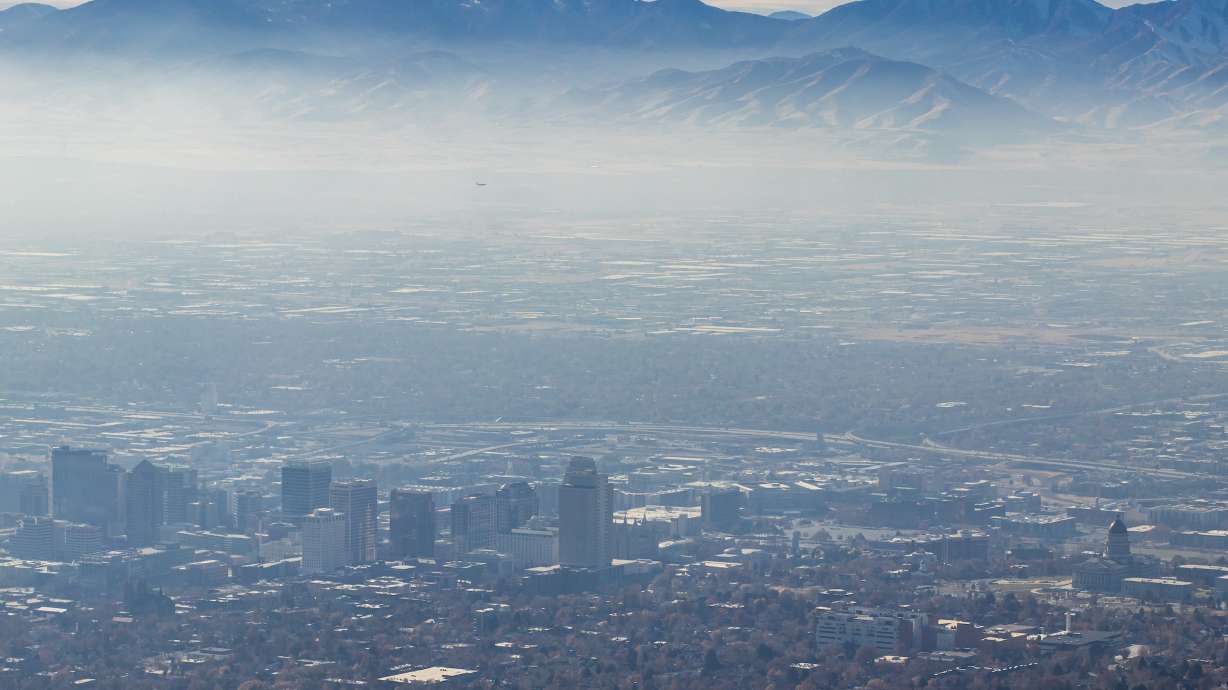Estimated read time: 3-4 minutes
This archived news story is available only for your personal, non-commercial use. Information in the story may be outdated or superseded by additional information. Reading or replaying the story in its archived form does not constitute a republication of the story.
SALT LAKE CITY — Prepare for more smog this week as inversion season hits Utah a few weeks earlier than usual.
By the end of October, the Beehive State seemed likely to skip fall entirely and move on to winter as temperatures plunged to a record low. But the weather has since returned to a (relative) normal, bringing with it a phenomenon many Utahns know and loathe: inversion.
Utahns along the Wasatch Front saw some pollution build up over the last week as a cold front that hit the east narrowly bypassed Utah. Over the weekend, however, a local dry front hit the state and brought winds that have since cleared the smog out, according to Salt Lake’s National Weather Service office.
But close on the front’s heels is a high pressure system that will trap the pollution and cause another smog buildup over the next few days.
While air quality along the Wasatch Front is currently in the green zone and rated as “good,” the Utah Department of Environmental Quality’s forecast predicts the air quality will move into the yellow or “moderate” zone Tuesday through Thursday.
When air quality is in the moderate zone, the department asks residents to take “voluntary action,” like refraining from burning wood or driving their cars, department spokeswoman Donna Spangler said.
Utah’s smog season typically starts around Thanksgiving, according to KSL meteorologist Grant Weyman, but it’s not wholly unusual to see hazy skies a bit earlier. Last year, inversion season began about mid-December.
What is inversion?
Inversion is actually a fairly misunderstood and misused word — even among Utahns.
“Inversions, by definition, are actually invisible,” Weyman said. “It is simply a layer of warmer air above a layer of colder air. It is ‘inverse’ because, normally, the air gets colder the higher up you go in the atmosphere.”
When Utah (especially the Salt Lake Valley and Wasatch Front) experience inversion, it means a layer of warmer air has trapped colder air in the valley, causing the air to remain in place over the valley floor. Eventually, smog and pollution build up in that trapped air and hang over the valley.
Related:
The high pressure system that will move into the valley over the next week is what will create the warmer layer of air that will trap the pollution. If colder air moves in above, then that layer of warmer air goes away and the inversion is “broken,” Weyman explained. Winds, rain and storms also help to clear the air.
The next storm won’t hit until Nov. 19 or 20, though a weak Saturday storm may clear out the smog expected to build up during the week. But Weyman doesn’t believe the pollution buildup will be too much worse than what Utahns saw the week previous.
How can Utahns combat inversion?
The Utah Department of Environmental Quality tracks the air’s quality hourly on its website and will notify residents via its social media pages on particularly bad air quality days. Air quality may range from “good” to “hazardous,” with other levels in between, including “moderate,” “unhealthy for sensitive groups,” “unhealthy” and “very unhealthy.”
During somewhat poor air quality days, the department may ask residents to voluntarily refrain from burning wood and driving their cars. On worse air quality days, residents may be prohibited from using solid-fuel burning devices and strongly encouraged to use public transit.
Those hoping to learn more about Utah’s air quality and how to reduce both their exposure and the inversion's impact can visit the Utah Department of Environmental Quality or the Utah Department of Health’s websites.










